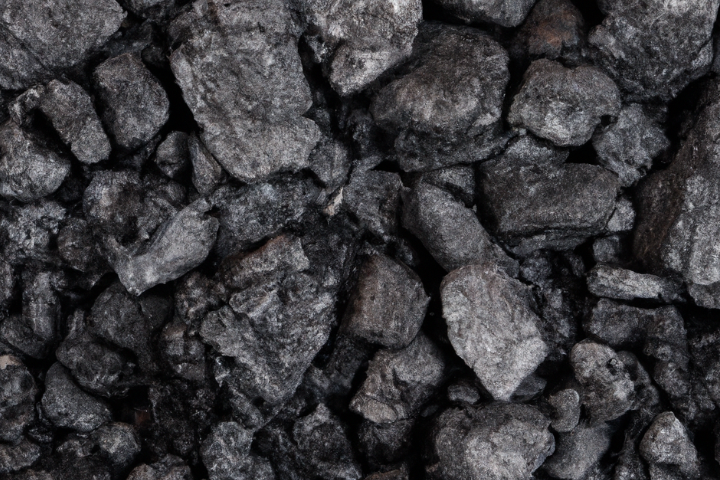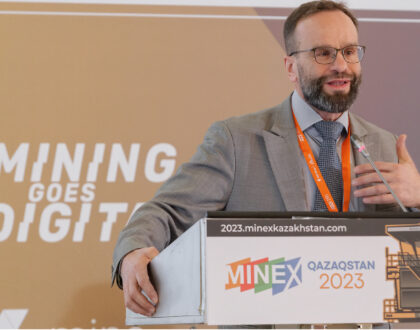Coal in Kazakhstan: an overview of production and prospects

The second half of last year was definitely remembered by Kazakhstan as a real coal “boom”. Demand for fuel from European countries increased many times as soon as the embargo on Russian coal came into force. Naturally, the enterprises of the Republic of Kazakhstan gave their shoulder, increasing the export of coal to the best of their ability. How profitable was last year for the coal industry in Kazakhstan and what are the prospects for supplies for 2023?
Get more
If you get more, you can sell more – a simple proportion. The International Energy Agency predicted that Kazakh companies will increase coal production in 2022 due to increased demand in the European market. The Coal 2022 report, published by the IEA in December last year, said that solid fuel production in Kazakhstan will grow from a sustainable level of 103 million tons to 108 million tons (+4.5% yoy).
In fact, enterprises of the republic produced 113.9 million tons of coal: 108.1 million tons of hard coal and 5.8 million tons of brown coal. This is 1.9% more than a year earlier, according to the Bureau of National Statistics. At the same time, exports increased by 3.75 million tons of coal compared to 2021. In total, 32.5 million tons of solid fuel were exported from the Republic of Kazakhstan.
Kazakh consumers need not worry: traditionally no more than a quarter of all extracted raw materials were sent for sale to other countries. The head of the coal industry department of the Ministry of Industry and Infrastructure Development, Zhanat Igisinov, said that in 2022, 64.4 million tons of coal were sent to the energy complexes of the Republic of Kazakhstan, 5.97 million tons to industrial enterprises, and 11.03 million tons to household needs of the population. million tons
Sell more
According to the latest data from the Bureau of National Statistics, Kazakhstan’s export earnings for 11 months last year increased by 87.6% compared to the same period in 2021: from $446 million to $837 million. It is predictable that the main cash inflow was provided by coal supplies to European countries. If in 2021 Kazakhstani enterprises sent fuel to buyers outside the CIS for $90.9 million, then in 2022 it was already $572.4 million. The increase was 58% in physical terms and almost 530% in monetary terms – very eloquent figures.
Exports to the CIS countries, on the contrary, decreased over the reporting period by 11.9% to 18.7 million tons. At the same time, Russia remained the main importer of Kazakh coal. 17.2 million tons of solid fuel were supplied to the neighboring state from the Republic of Kazakhstan, almost the same as in 2021. Coal exports to Belarus fell by 93.5%, to Ukraine – by 88.1%, to Kyrgyzstan – by 14.6%.
Gaps in the supply of raw materials to the CIS countries, Kazakhstan very successfully managed to fill by increasing exports to other countries. For example, Poland imported 16.6 times more coal than a year earlier, namely 1.3 million tons. But Cyprus, which received about 753 thousand tons of coal, increased the import of coal the most, 27.3 times more in comparison with the same period in 2021.
Switzerland became the main buyer of Kazakh coal among European countries in 2022. For 11 months, this state was supplied with about 4.4 million tons of solid fuel in the amount of $132.1 million (+223% year-on-year).
If in January-November 2021, the EU countries purchased 780 thousand tons of coal from the Republic of Kazakhstan, then in 2022 – already 4.9 million tons (Eurostat data). Imports rose sharply against the backdrop of the energy crisis in Europe, which became one of the most discussed topics of the past year. In the new realities of the country, declaring the rejection of “dirty” fuel and the transition to “green” energy, they decided to turn their attention back to coal.
“Europe first decided to impose sanctions on coal imports, because it is much easier to do without it than without oil or Russian gas. Coal is a global commodity that is relatively easy to mine and sell around the world. Europe can get reserves from countries other than Russia, but at a higher price,” said Damien Ernst, lecturer at the University of Liege in Belgium and the Polytechnic Institute in Paris, in an interview with RIA Novosti.
Indeed, retail prices for solid fuel in Europe jumped 3-4 times last year: from $100 to $380-400 per 1 ton. It can be said that Kazakhstan increased its presence in the European market at a very favorable time from the point of view of the seller. But will coal exports be just as profitable in 2023? Analysts believe that this is a moot point.
In particular, Alfa-Bank expert Boris Krasnozhenov told Kommersant that further substitution of Russian volumes in the European market would be difficult for Kazakhstan. According to the expert, in the future, an increase in exports should be associated with the development of coal enrichment technologies in the republic, as well as an increase in the quality of coal supplied by Kazakh enterprises.
In addition, solid fuel is gradually becoming cheaper, Mr. Krasnozhenov noted. If in autumn thermal coal with a calorific value of 6,000 kcal on the basis of CIF ARA cost about $400 per ton, then by the beginning of 2023 its price on the European market dropped again to $130. It is likely that Kazakh enterprises should not expect the same sharp increase in export earnings as in the second half of 2022, at least in the first quarter of this year.
Coal floated by the sea
It cannot be said that replacing the share of the Russian Federation in the coal market is easy for Kazakhstan. The EU embargo on Russian fuel began to operate in August 2022, and already in September, the Kazakhstani Association of Mining and Metallurgical Enterprises (AGMP) announced problems with logistics.
The enterprises of the Republic of Kazakhstan had to look for new export routes, since sanctions were also imposed on Russian railways. Coal companies have changed to the Trans-Caspian route, through which products are shipped from the seaport of Aktau, sent to Azerbaijan, Georgia and further to Turkey and European countries.
As Nikolai Radostovets, executive director of AGMP, stated, the capacity of the transport corridor should be increased with the help of private investments in the construction of terminals. This is indeed one of the necessary measures to resolve logistical issues, since in 2022 the Transcapian route was not ready to “digest” the increased flow of cargo. Therefore, coal companies for the most part transported raw materials in the old fashioned way – through the territory of the Russian Federation.
In December last year, a representative of the Russian railway operator told Vedomosti that Kazakh coal is being shipped en masse by rail through the Russian Federation to the ports of the North-West (Baltic Sea) and further to Europe. From August to November, 3.72 million tons of fuel were transported from the Republic of Kazakhstan in this direction. Over 4 months, transit increased by 27% compared to the same period in 2021.
The number of wagons for transportation increased by 3,000 over the month, to 15,400 units. In November alone, Kazakhstan sent 1 million tons of coal for transshipment to the ports of the North-West. And at the end of the year, the export of Kazakh coal through the Russian Federation increased by 11%.
According to the report of the Argus agency “Changes in the logistics of deliveries and transit of dry cargo in the countries of Central Asia and the South Caucasus”, which was received by Kommersant, over the year, enterprises of the Republic of Kazakhstan increased the transit of fuel through the Russian Federation to non-CIS countries to 9.9 million tons.
Most of the cargo was sent towards seaports, namely 9.3 million tons. Large volumes of raw materials were still shipped through the Russian ports of Taman and Ust-Luga, but the coal companies of the Republic of Kazakhstan also established cooperation with the Latvian ports of Riga and Ventspils. According to Argus, 2.4 million tons of fuel were sent through the port of Ventspils (an increase of 2.4 times in annual terms), and 630 thousand tons through the port of Riga (an increase of 13 times).
According to Argus analysts, in the first quarter of this year, Kazakhstan may further increase the shipment of coal in the direction of Polish and Baltic ports thanks to discounts on rail transit through the territory of the Russian Federation.
By the way, in November 2022, clouds were gathering over the supply of Kazakh solid fuel via Russian railways. The Russian Energy Agency proposed to temporarily ban the transit of coal from third countries, including the Republic of Kazakhstan, to support domestic exporters. The authorities did not take this measure, but one can imagine what losses Kazakh enterprises would have suffered.
And probably not without losses in 2022. Last summer, the MIIR Industrial Development Committee estimated that Kazakhstan’s coal companies would lose $300 million from selling coal on the European market due to anti-Russian sanctions and the ensuing logistics problems. True, official data that would confirm or refute the correctness of the department have not yet been received in 2023.
By the way, the European Union promised to compensate Kazakhstan and other countries for the damage from the sanctions imposed on the Russian Federation. European diplomat Josep Borrell stated this at a November meeting with President of the Republic of Kazakhstan Kassym-Jomart Tokayev. However, Mr. Borrell did not name specific amounts and terms, so for now the prospect of compensating for the funds lost by coal exporters seems very vague.
Export in 2023
Logistics is a delicate matter, and it is difficult to predict whether Kazakhstan will be able to transport coal to Europe smoothly on Russian railways in the future. However, the Republic of Kazakhstan will always have a reliable source of supplies – neighboring Uzbekistan. In particular, Turar Zholmagambetov, Deputy Chairman of the MIIR Industrial Development Committee, thinks so.
“In the prospects of the coal industry, if we do not process coal, then we will definitely increase its export. This is at least Europe and at most our closest neighbor Uzbekistan, where there is convenient logistics and an understandable market. We used to think that there is a lot of gas in Uzbekistan. But, as it turned out, there is an acute shortage of gas.
Therefore, Uzbekistan began to build several coal-fired power plants. What this means: we have new sales directions – quite capacious and stable,” said Mr. Zholmagambetov in an interview with the Atameken Business TV channel.
Long-term (at least 10 years) supplies of coal to three coal-fired thermal power plants that are being built in Uzbekistan are provided for under a new agreement signed by the heads of the republics in December last year.
The need for cheap coal energy does not seem to disappear in the foreseeable future, not only in Uzbekistan, but also in European countries that advocated a reduction in the carbon footprint. According to Mr. Zholmagambetov, Europe will not give up coal in the next 5-10 years, and the demand for Kazakh fuel will grow.



